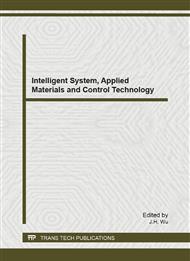p.217
p.221
p.227
p.232
p.239
p.243
p.247
p.251
p.255
Analysis and Research of Humanoid Robot Facial Expression Behavior Simulations
Abstract:
By analyzing the motion of eyes, eyebrows, mouth, and lower jaw in typical facial expressions, it obtains the motion scopes of each organ. Base on the humanoid head mechanism design, a robot model is created with existing software, which blends head mechanism model and facial elastomeric model. It simulates four typical facial expressions of the humanoid robot (happiness, sadness, surprise, anger) by using finite element method to analysis and simulation; and discuses under different displacement load, the degree of realizing facial expressions. It provided data for humanoid robot to be farther designed and developed.
Info:
Periodical:
Pages:
239-242
Citation:
Online since:
January 2013
Authors:
Price:
Сopyright:
© 2013 Trans Tech Publications Ltd. All Rights Reserved
Share:
Citation:


